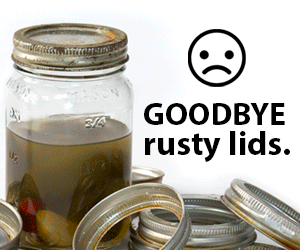If you’re an avid gardener or simply enjoy the flavors and aromas of fresh herbs, learning how to properly dry and store them can help you enjoy their benefits long after the growing season has ended. Drying herbs is a simple process that preserves their flavor, aroma, and nutritional value, allowing you to use them in your favorite recipes throughout the year. In this article, we’ll guide you through how to dry and store herbs from your garden.

Harvesting Herbs
The first step in drying herbs is to harvest them at the right time. Here are some tips to ensure you get the best quality herbs:
- Harvest herbs in the morning, after the dew has evaporated but before the sun becomes too hot. This is when the essential oils in the herbs are at their peak.
- Choose healthy, unblemished leaves and stems for drying. Avoid any diseased or insect-damaged parts of the plant.
- Cut the stems just above a leaf node, leaving enough of the plant behind to continue growing.
- Gently shake or brush off any dirt or debris from the herbs.
- Rinse the herbs under cool running water if necessary, and pat them dry with a clean towel or paper towel.

Drying Methods
There are several methods for drying herbs, each with its own advantages. Choose the one that best suits your needs and available resources.
Air Drying
Air drying is the most traditional and economical method for drying herbs. It works best for herbs with low moisture content, such as thyme, oregano, and rosemary.
- Gather the herbs into small bundles, securing the stems with string or rubber bands.
- Hang the bundles upside down in a dry, warm, and well-ventilated area, away from direct sunlight. An attic, unused closet, or pantry can work well.
- Place a paper bag with holes punched in it over each bundle to catch any falling leaves and to protect the herbs from dust.
- Allow the herbs to dry for 1-2 weeks, or until the leaves crumble easily when rubbed between your fingers.

Oven Drying
Oven drying is a quicker method that works well for herbs with higher moisture content, such as basil, mint, and tarragon.
- Preheat your oven to the lowest setting, typically around 95°F (35°C) to 115°F (46°C).
- Spread the herbs in a single layer on a baking sheet lined with parchment paper.
- Place the baking sheet in the oven, leaving the door slightly ajar to allow air circulation and prevent the herbs from cooking.
- Check the herbs every 30 minutes, turning them occasionally to ensure even drying.
- Depending on the herb and your oven, drying can take anywhere from 1-4 hours. The herbs are ready when they crumble easily.

Microwave Drying
Microwave drying is the quickest method but requires careful attention to prevent the herbs from burning.
- Spread a single layer of herbs on a microwave-safe plate lined with a paper towel.
- Microwave on high for 1 minute, then check the herbs. If they are not completely dry, continue microwaving in 30-second intervals until they crumble easily.
- Be cautious, as herbs can easily burn in the microwave if left too long.

Dehydrator Drying
If you have a food dehydrator, this can be an efficient and consistent method for drying herbs.
- Arrange the herbs in a single layer on the dehydrator trays, ensuring adequate space between each piece for air circulation.
- Set the dehydrator to a low temperature, around 95°F (35°C) to 115°F (46°C), and dry the herbs for 1-4 hours, or until they crumble easily.
- Check the herbs periodically and rotate the trays if necessary for even drying.

Storing Dried Herbs
Once your herbs are thoroughly dried, it’s essential to store them properly to maintain their quality and freshness.
- Crumble the dried herbs into small pieces, removing any tough stems.
- Place the crumbled herbs in airtight containers, such as glass jars or resealable plastic bags.
- Label each container with the name of the herb and the date of drying.
- Store the containers in a cool, dry, and dark place, away from direct sunlight and heat sources. Properly stored dried herbs can retain their flavor and potency for 6-12 months.

Using Dried Herbs
When using dried herbs in recipes, keep in mind that their flavor is more concentrated than fresh herbs. As a general rule, use about 1/3 to 1/2 the amount of dried herbs as you would fresh herbs. For example, if a recipe calls for 1 tablespoon of fresh basil, use about 1 teaspoon of dried basil instead.
Dried herbs work well in a variety of dishes, such as:
- Soups and stews
- Sauces and marinades
- Salad dressings
- Herb rubs for meats
- Herbal teas and infusions
Tips for Success
- Experiment with different drying methods to find the one that works best for you and the herbs you’re drying.
- Avoid drying herbs with high moisture content, such as basil and mint, in humid conditions, as they may mold before they dry completely.
- Check your dried herbs regularly for signs of mold or insect activity, and discard any affected herbs.
- When using dried herbs in cooking, add them earlier in the cooking process than you would fresh herbs to allow their flavors to develop.
- Crush or rub dried herbs between your fingers before adding them to dishes to release their aromatic oils and enhance their flavor.
Conclusion
Drying and storing herbs from your garden is a simple and rewarding process that allows you to enjoy their flavors and benefits year-round. By following these guidelines for harvesting, drying, and storing your herbs, you can ensure that your dried herbs retain their quality and potency for months to come. Whether you’re using them in your favorite recipes or creating aromatic herbal teas, your homegrown dried herbs will add a delightful touch of freshness and flavor to your culinary creations.















